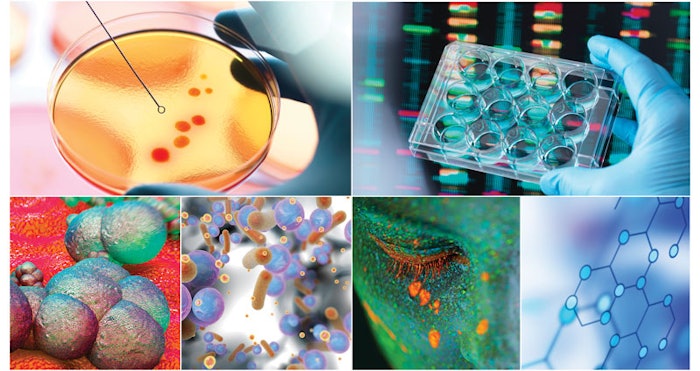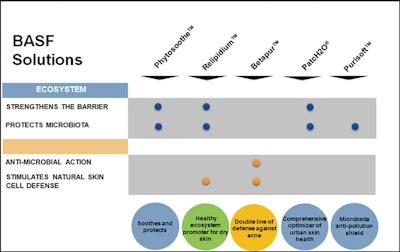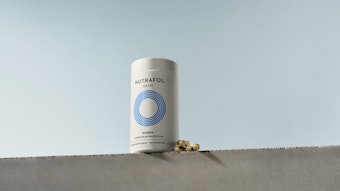
For years, the study of the human body has shown that microbial cells outnumber human cells by a ten to one ratio. Despite this understanding, there were few studies completed to clarify the influence these cells had on the overall health and well-being of an individual. Enter the Human Microbiome Project, where the above topic was the key focus.1 Since its initiation more than a decade ago, substantial strides in the research have helped us to better understand the microbiota, or community of micro-organisms, living at the surface of and within our skin. The microbiome, or the collective genomes of the microbiota, have a role in maintaining our health, both internally as well as externally, on our skin. The skin and its microbiota form an ecosystem containing commensal or “good” bacteria, and pathogenic or “bad” bacteria, which are both present on the skin.2
Consumers have largely embraced the microbiome topic for digestive health through the use of ingestible probiotics and prebiotics, but their interest in the microbiome for skin health is still in its initial growth phase. Millennials are setting the trend, being the group most interested in the microbiome and trying products targeted for facial skin care. However, interest in the microbiome and how it relates to beauty has also been growing for those 55 and older.3 Consumers have started to look for more personalized products that fit their skin care needs. The microflora and microbiome are diverse not only from person to person, but even from one part of the body to another. It is not a surprise that since 2015, significant growth has been observed for products containing microbiome entities, with an increase of 45% in overall microbiome-focused launches compared to previous years.3
The driver behind many of these products is the desire to find a balance between commensal and pathogenic bacteria; a balance that leads to healthy skin. The commensal bacteria help to prevent the overproduction of pathogenic bacteria, which balances the skin, leaving it healthy and providing an efficient barrier to keep dirt and bacteria out while keeping moisture in. When there are fewer commensal bacteria present, this balance is disturbed, leading to an overproduction of pathogenic bacteria and causing the skin to go into a state of dysbiosis. Specifically, the microbiome can contribute to certain skin conditions such as inflammation, dry skin, redness and acne. Both behavioral aspects, like personal hygiene, and external factors, like environmental influences, contribute to the overall microbiome of the skin.
BASF offers several solutions to address these conditions through a variety of approaches.
Traditional approaches to address blemished skin can include alpha- and beta-hydroxy acids, but they are known to be irritating. BASF offers gentler versions of these ingredients while maintaining their effectiveness:
- Beta-Hydroxyde™ ACSD (INCI: Salicylic Acid, Senegal Acacia Gum)
- AHCare™ L65 (INCI: Lactic Acid, Water, Arginine)
- AHCare™ G60 (INCI: Glycolic Acid, Water, Arginine).
Boosting the skin’s defense systems and/or preserving its barrier is another method to help balance the microbiome. Ingredients with these effects include:
- Phytosoothe® (INCI: Brassica Campestris Sterols, Cetearyl Alcohol), which is made up of phytosterols from canola and acts as a vegetal biomimetic, has demonstrated ability to protect the barrier and microbiota.
- Betapur® (INCI: Water, Butylene Glycol, Peumus Boldus Leaf Extract, Pentylene Glycol, Xanthan Gum), contains Chile’s “wild mint” leaves that stimulate the skin’s natural defenses and provide clinically significant improvement to skin’s complexion, pore visibility and blotchy patches.
- PatcH2O® (INCI: Water, Glycerin, Trehalose, Urea, Serine, Pentylene Glycol, Glyceryl Polyacrylate, Algin, Caprylyl Glycol, Sodium Hyaluronate, Pullulan, Disodium Phosphate, Potassium Phosphate), is a film-forming molecular mesh that provides immediate and long-lasting hydration.
- Purisoft® (INCI: Moringa Oleifera Seed Extract, Maltodextrin), is composed of Moringa seed proteins traditionally used to purify river water for drinking. These super seeds also act as a film-former and can prevent pollutants from adhering to skin.
Lastly, probiotics and postbiotics are another approach:
- Relipidium® (INCI: Hydrolyzed Yeast Protein, Butylene Glycol, Pentylene Glycol) is created through the fermentation of a yeast extract and an exclusive strain of Lactobaccillus plantarum. It has been shown to stimulate the skin’s defenses, rebalance skin microflora (clinically) as well as significantly moisturize skin.
 * Note: A liquid version of Purisoft®
* Note: A liquid version of Purisoft®- https://commonfund.nih.gov/hmp/
- Montiel-Castro, AJ, et. al., Front. Integr. Neurosci., Oct. 2013
- www.mintel.com
Disclaimer:
The above paid-for content was produced by and posted on behalf of the Sponsor. Content provided is generated solely by the Sponsor or its affiliates, and it is the Sponsor’s responsibility for the accuracy, completeness and validity of all information included. Cosmetics & Toiletries takes steps to ensure that you will not confuse sponsored content with content produced by Cosmetics & Toiletries and governed by its editorial policy.










